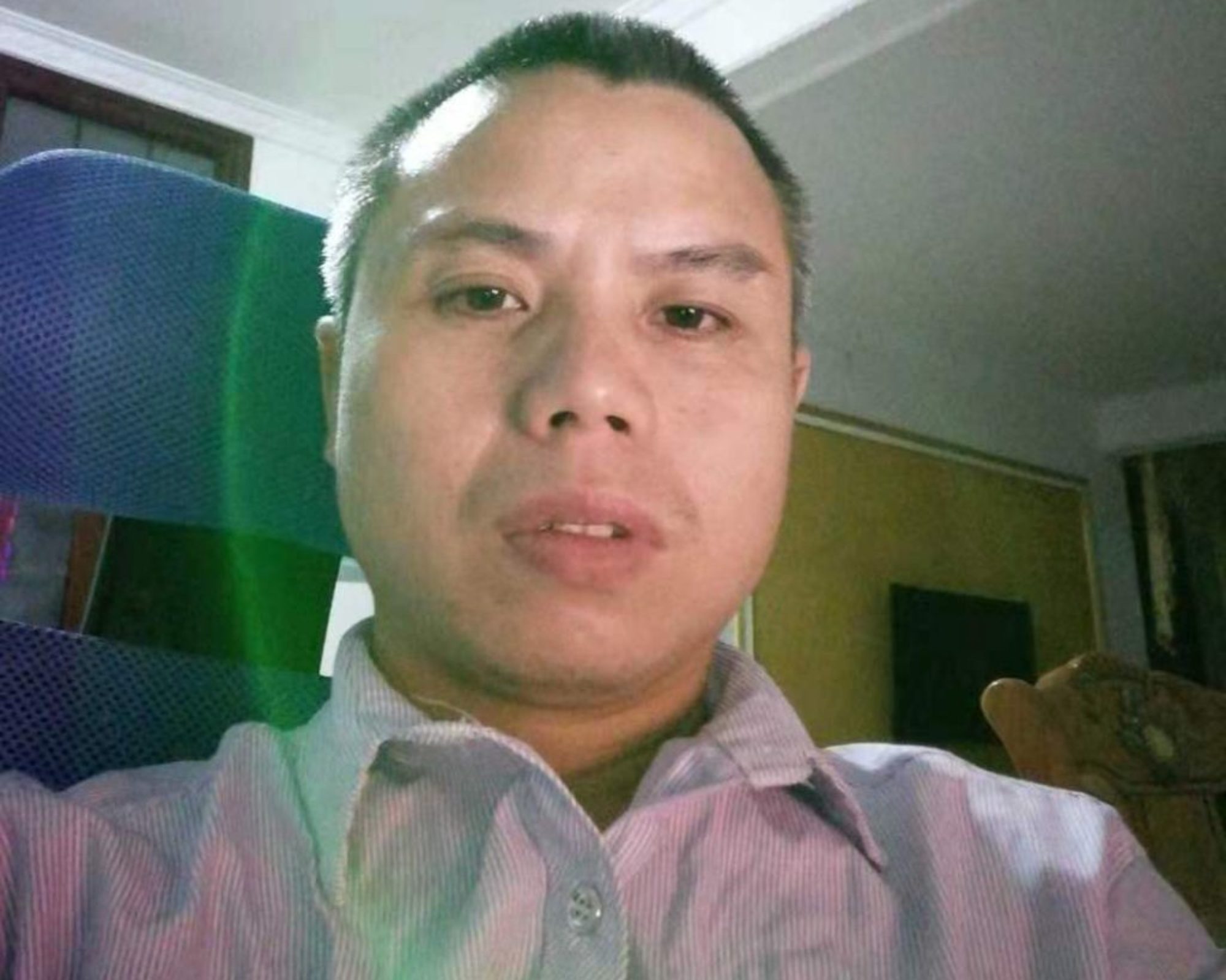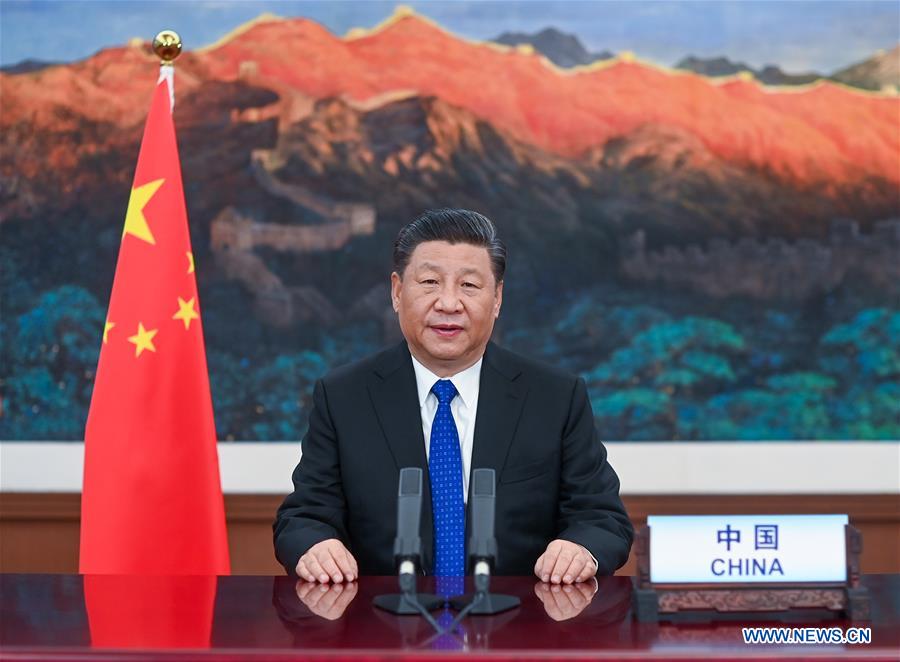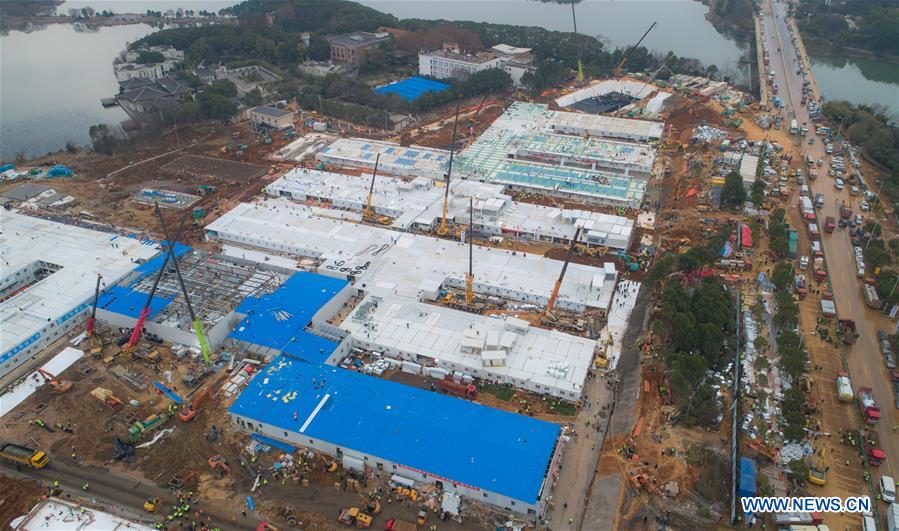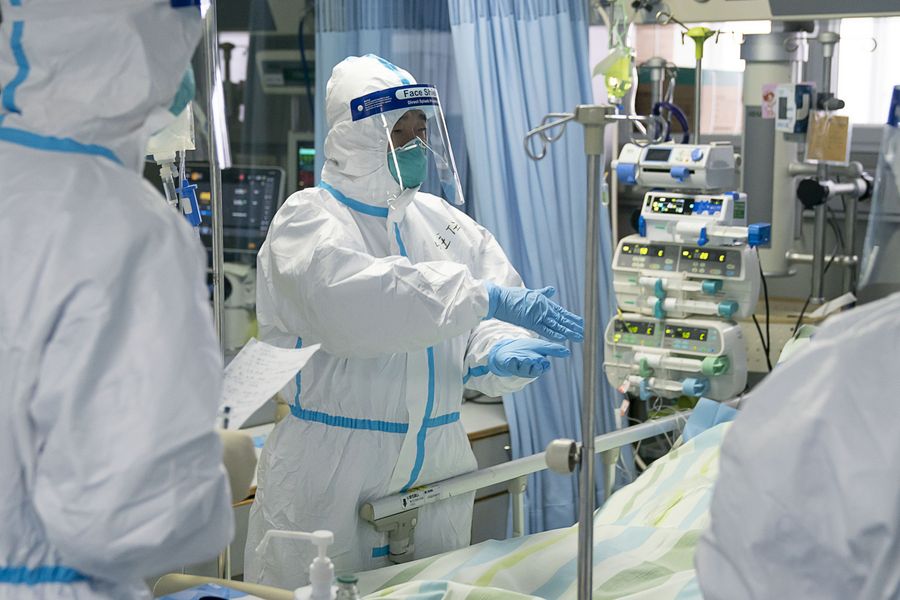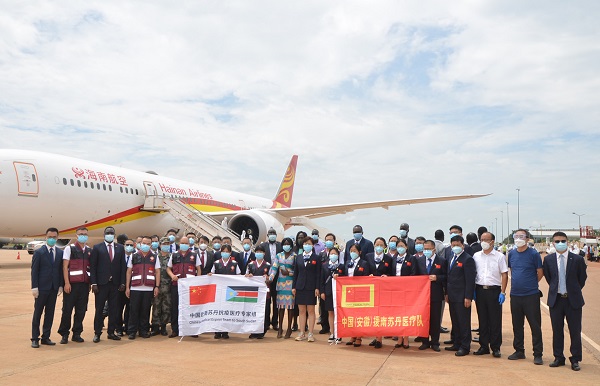By CuiYue (Peoples Daily Online)11:19, September 01, 2020
While doing a good job in its prevention and control of the COVID-19 epidemic, China has also overcome its own difficulties and done everything it can to help the international community and safeguard global health, demonstrating its sense of justice and responsibility, as well as its commitment to the ideas of mutual assistance and international cooperation as a major country through concrete actions.
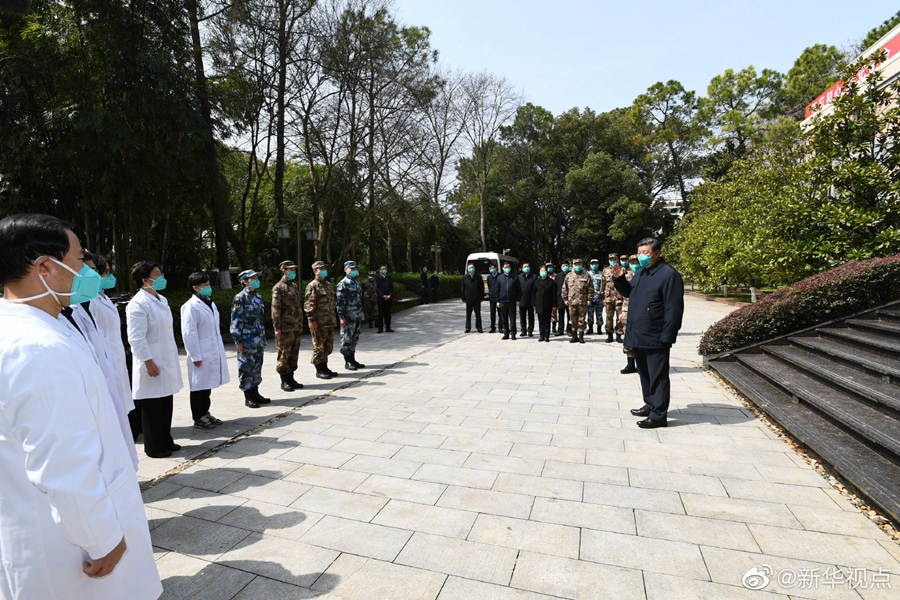
President Xi Jinping learns about Huoshenshan Hospitals operations, treatment of patients, protection for medical workers and scientific research after arriving in Wuhan, March 10, 2020. (Photo/Xinhua)
China has put the lives of its 1.4 billion people front and center. Chinese President Xi Jinping, General Secretary of the Communist Party of China Central Committee, has taken personal command of the situation, planned the response, and emphasized that people鈥檚 lives and health must come first.
The country has covered all treatment expenses for COVID-19 patients, maximized the detection and cure rates while minimizing infection and death rates. Medical workers have raced against time to save lives.
Since the onset of the epidemic, China has shouldered its responsibility as a major country in the world. The country took the initiative to inform the World Health Organization (WHO) and relevant countries of the epidemic at the earliest possible time in an open and transparent manner.
It promptly closed all outbound channels from Wuhan, the former epicenter of the epidemic, to prevent the spread of the virus. The country has updated its diagnosis, treatment, prevention and control solutions, and shared them with over 180 countries and more than 10 international and regional organizations.
WHO Director-General Dr. Tedros Adhanom Ghebreyesus noted that China鈥檚 forceful actions protected not only its own people, but also the rest of the world.
While fighting the epidemic in an all-round way, China has cooperated and shared information with the international community in an active, open and transparent way, demonstrating the image of a responsible major country, said Robert Lawrence Kuhn, chairman of the Kuhn Foundation in the U.S.
China has also fully demonstrated its sense of justice in the battle against the epidemic by strengthening unity and cooperation and promoting multilateral coordination.
In his phone calls and meetings with foreign leaders and heads of international organizations, President Xi explained China鈥檚 strategy and achievements in fighting the virus. He has also repeatedly emphasized the importance of solidarity and cooperation at international meetings.
鈥淢ankind is a community with a shared future. Solidarity and cooperation are our most powerful weapons for defeating the virus,鈥?Xi said at the Virtual Event of the Opening of the 73rd World Health Assembly.
At the Extraordinary G20 Leaders鈥?Summit, President Xi noted that it is imperative for the international community to strengthen its confidence, act with unity and work together in a collective response, calling on all countries to comprehensively step up international cooperation and foster greater synergy so that humanity as one can win the battle against this major infectious disease.
China鈥檚 voice has injected impetus into the global anti-epidemic cooperation and boosted confidence in safeguarding multilateralism and justice.

On March 16 local time, 300,000 masks from China arrive at the Liege Airport in Belgium. (Photo/Xinhua)
By the end of May, China had sent 29 medical expert teams to 27 countries, and offered assistance to 150 countries and 4 international organizations. It has instructed its medical teams stationed in 56 countries to support the local fight, and provide counselling and health information to local people and overseas Chinese. They have so far organized over 400 online and offline training sessions related to this endeavor.
Chinese factories have operated at full capacity to make high-quality medical supplies and equipment that are badly needed around the world. As of May 24, it had exported 56.8 billion surgical masks and 250 million protective gowns, among other provisions.
These concrete actions fully reflect China鈥檚 belief that a just cause should be pursued for the common good, winning high recognition from the international community.
Russian President Vladimir Putin said China has set a good example for the international community by promptly lending a helping hand to other epidemic-hit countries.
When France was also hit hard by the virus, China gave a concrete display of its solidarity through a shipment of masks and hospital equipment, which was highly appreciated by the French government and people, said former French Prime Minister Jean-Pierre Raffarin.
The Sino-French friendship will emerge strengthened from this tragic crisis. It is in difficulties that we measure true friendship, he added.
Meanwhile, Chinese people have conveyed their love in the COVID-19 response through non-governmental assistance.

A little volunteer (left) distributes masks to local children in Tokyo on Feb. 29, 2020. (Photo/Xinhua)
A Chinese girl held a cardboard box with the Japanese words 鈥淕ratitude from Wuhan鈥?on it and distributed masks on the streets of Tokyo, with the intention of raising awareness of epidemic prevention and thanking the Japanese people who had donated masks to China. The girl鈥檚 actions left numerous internet users deeply moved.
Such stories are commonly heard around the world. The small streams that gathered together in their global pandemic response have formed a magnificent river of unity, justice and advancement against the virus, writing a stirring chapter in the building of a community with a shared future for mankind.
As the epidemic spreads around the world, Chinese non-governmental organizations and overseas Chinese from all over the world have also contributed to the fight against the epidemic.
The Silk Road Community Building Initiative launched by the China Association for NGO Cooperation has facilitated cooperation with dozens of countries in donations of materials, experience sharing and volunteering services. In addition, a campaign named the Green Ribbon Initiative was jointly launched by over 150 social organizations and other units in China, and has donated anti-epidemic supplies to about 20 countries, including Italy and Iran, as well as the United Nations Human Settlements Program.
Non-governmental forces are sending their love beyond borders. The deep friendship between China and the international community in their anti-epidemic fight brings to life the vision of building a community with a shared future for mankind.
![]()
